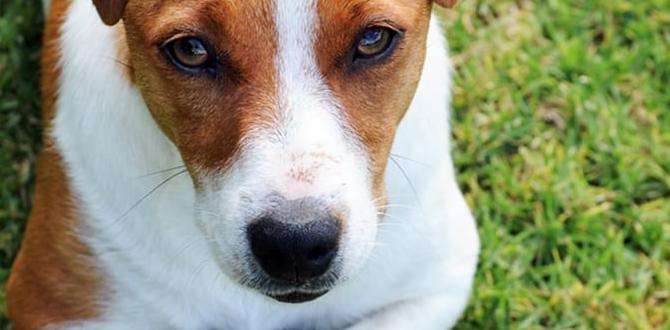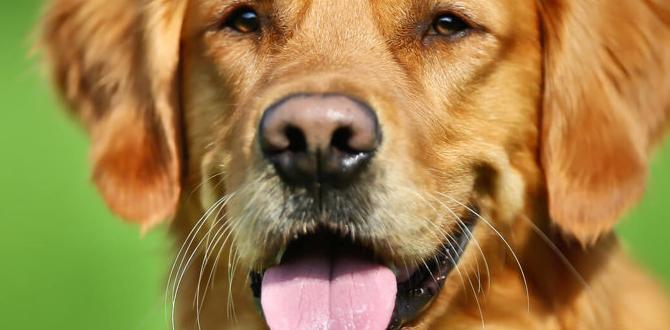Do you know if your dog gets anxious? Dogs, like people, can feel worried or scared. It’s important to notice these feelings in your pets. Knowing the signs of anxiety in dogs can help you support them. Would you like some tips to help ease your dog’s worries? Keep reading to learn more about dog anxiety signs and tips.
Key Takeaways
- Recognize common signs of anxiety in dogs.
- Understand how to comfort an anxious dog.
- Learn tips to ease your dog’s anxiety.
- Dog anxiety signs tips create a safer environment.
- Help your dog stay calm and happy.
Understanding Dog Anxiety Signs
Have you ever seen your dog act strange or restless? Dogs can’t tell us directly when they feel anxious. However, they show it through their behavior. Common signs include barking more than usual or chewing things they shouldn’t. You might also see them shake or hide. Pay attention to these signs. They can help you understand your dog’s feelings.
- Excessive barking or whining.
- Chewing or scratching furniture.
- Pacing back and forth.
- Hiding under furniture.
- Shaking or trembling.
- Loss of appetite.
- Frequent yawning.
It’s important to recognize these signs early. This way, you can help your dog feel more at ease. When dogs feel safe, they are happier and healthier. If you notice these behaviors, try to find out what is causing them. Maybe it’s loud noises or being left alone. Understanding the cause can help you address it better.
Fun Fact or Stats : Around 40% of dogs show anxiety behaviors.
How to Spot Anxiety Early
Have you noticed your dog’s ears pinned back or tail tucked? These can be early signs of anxiety. Dogs often give these clues before they start barking or chewing things. By spotting these early signs, you can help your dog before their anxiety gets worse. A calm touch or soothing voice might help ease their mind.
Changes in Eating Habits
Does your dog skip meals or eat less often? Changes in eating habits can indicate anxiety. If your dog usually loves their food but suddenly loses interest, they might be stressed. Monitor their eating patterns closely. If it continues, consult a vet to rule out other problems.
Excessive Barking and Whining
Does your dog bark or whine a lot more than usual? Dogs use barking to communicate, but excessive barking can be a sign of anxiety. It’s like your dog is trying to tell you something is wrong. Listening to them and trying to figure out why they are anxious can help solve the problem.
Tips to Calm an Anxious Dog
Feeling worried about how to calm your dog? There are many ways to help. Try creating a quiet space for them. Comfort items, like a favorite blanket, can also help. Consistent routines make dogs feel safe. Exercise is great for releasing nervous energy. Always speak softly to your anxious dog. Let’s explore these tips further.
- Provide a quiet, safe space.
- Offer comfort objects like toys or blankets.
- Keep a consistent daily routine.
- Ensure they get regular exercise.
- Speak calmly and reassuringly.
- Try relaxation music for dogs.
- Gently massage your dog.
Trying different methods can help you find what works best for your dog. Some dogs love soothing music, while others prefer a quiet room. Over time, you’ll understand what helps your dog the most. Remember, being patient and gentle is key. Your calm energy can greatly comfort your furry friend.
Fun Fact or Stats : Studies show dogs enjoy classical music to relax.
Creating a Safe Space
Does your dog have a special place they like to go? Creating a safe space can make a huge difference. This could be a cozy corner with their bed or a room with low lights. A safe space can help your dog feel secure and calm when they feel anxious. Be sure to check in on them regularly.
Using Comfort Items
Does your dog have a favorite toy or blanket they love? Comfort items can provide a sense of security. Placing these items in your dog’s safe space can help them feel more at ease. It’s like giving them a hug without touching. These items can be very comforting, especially when you are not around.
Importance of Routine
Have you noticed your dog prefers a routine? Dogs love knowing what comes next. Keeping a regular schedule for meals, walks, and playtime helps reduce anxiety. A consistent routine helps your dog feel safe because they know what to expect. Remember, small changes can make a big difference.
Helping Dogs with Separation Anxiety
Does your dog panic when you leave home? Separation anxiety is common in dogs. They become stressed when left alone. You can help by making departures calm and brief. Gradually increase the time you’re away. Leave a piece of clothing with your scent for comfort. Training and patience are key.
- Keep departures low-key.
- Leave personal items for comfort.
- Gradually increase alone time.
- Use relaxing music or TV sounds.
- Consider positive reinforcement training.
- Consult a professional trainer if needed.
- Provide puzzle toys for distraction.
Separation anxiety can be challenging. But with the right steps, your dog can learn to feel more comfortable when alone. Training and patience go hand in hand. Every small step you take to help your pet can make a huge difference in their comfort level. Don’t hesitate to seek help if needed.
Fun Fact or Stats : About 14% of dogs suffer from separation anxiety.
Understanding Why Dogs Get Anxious
Do you know why some dogs feel anxious when alone? Dogs are social animals and love company. They might worry you won’t come back. Understanding why they feel this way helps in finding solutions. Gradually making them comfortable with short absences can help them adjust better.
Training Techniques
Have you tried training techniques to help your anxious dog? Training can make a big difference in reducing anxiety. Techniques like positive reinforcement teach them that being alone isn’t scary. With patience, your dog can learn to feel safer when you’re away from home.
Using Distraction Methods
What if you could distract your dog while you’re away? Toys and treats that engage your dog’s mind can work wonders. Puzzle toys keep them busy and distracted. This can make your absence feel shorter. Finding the right distraction is key to creating a peaceful environment for your dog.
Other Common Dog Anxiety Causes
Have you ever noticed your dog afraid during storms? Loud noises, like thunder, can scare dogs. New environments or meeting new people might also cause stress. Identifying these triggers is the first step in helping your dog. Learn to recognize what makes your dog feel uneasy.
- Fear of loud noises like thunder.
- Stress from new places or people.
- Anxiety from changes in routine.
- Unfamiliar smells or sounds.
- Nervousness from previous trauma.
- Fear of traveling in cars.
- Discomfort with certain animals.
Understanding what causes your dog’s anxiety helps you tackle the problem. By addressing these triggers, you can help your dog feel safer and more comfortable. Never dismiss your dog’s fears. Always approach them with patience and love, and seek professional advice if needed.
Fun Fact or Stats : Thunderstorm anxiety affects 15% of dogs.
Loud Noises and Anxiety
Have you ever seen your dog hide during a thunderstorm? Loud noises can cause a lot of stress for dogs. Their hearing is much more sensitive than ours. To help, create a quiet space away from the noise. Calming music can help drown out the scary sounds.
Meeting New People
Does your dog get nervous meeting new people? Sometimes, dogs feel anxious around strangers. It helps to introduce them slowly and in a calm setting. Let your dog approach the new person when they feel ready. Taking it slow can help ease their anxiety.
Travel Anxiety
Does your dog get anxious in the car? Many dogs feel nervous about traveling. You can help by taking short trips at first. Gradually increase the length of the rides. Making the car a comfortable place with their favorite blanket or toy can also help ease their worries.
When to Seek Professional Help
Wondering if your dog needs a professional? If your dog’s anxiety doesn’t improve, it might be time to seek help. A vet or a dog behaviorist can offer advice. They might suggest medication or special training. Professional help can provide solutions that you haven’t tried.
- Persistent anxiety despite efforts.
- Harmful or destructive behaviors.
- Severe fear responses.
- Anxiety affecting your dog’s health.
- Advice on medication or therapies.
- Behaviorists for specialized training.
- Guidance on long-term strategies.
Don’t hesitate to reach out for help if needed. Professionals have training and experience in handling dog anxiety. They can work with you to develop a plan that suits your dog’s needs. Remember, you’re not alone in this journey. Support is always available.
Fun Fact or Stats : Dog behaviorists use 5-10 sessions for anxiety treatment.
Signs It’s Time for Help
How do you know when to seek help for your dog? If anxiety affects their quality of life, it’s time. If your dog shows continuous signs of stress or fear, professional advice can be beneficial. Don’t wait too long—early intervention can make a difference.
Finding a Good Vet or Behaviorist
Are you unsure where to find help for your dog? Ask friends or your vet for recommendations. Many professionals specialize in dog anxiety. They use methods that are safe and effective. Finding the right person can provide relief for both you and your dog.
What to Expect from Professional Help
Ever wondered what happens in a session with a behaviorist? They will observe your dog and discuss their behavior. Together, you’ll work on a plan to address the anxiety. They might offer training tips or suggest changes in routine. With guidance, your dog can feel more secure.
Conclusion
Helping your dog with anxiety is important. Understanding dog anxiety signs and tips can make a big difference. Always be patient and loving. Remember, your support can greatly comfort your furry friend. Together, you can help them live a happier, calmer life.
FAQs
Question: How can I tell if my dog is anxious?
Answer: Look for signs like excessive barking, shaking, or hiding. If your dog shows unusual behaviors, they may be anxious. Pay attention to these changes, as recognizing dog anxiety signs can help you provide better care.
Question: What causes anxiety in dogs?
Answer: Various things can cause anxiety. Loud noises, changes in routine, or unfamiliar people can make dogs anxious. Understanding these triggers helps you in offering the right tips to comfort them. Always be patient and supportive.
Question: How can I ease my dog’s anxiety?
Answer: Try calming techniques like a quiet space, comfort items, or soothing music. Regular routines help too. Explore different tips to find what works best. Your dog’s anxiety signs might lessen with these efforts.
Question: Should I consult a vet for dog anxiety?
Answer: If your dog’s anxiety doesn’t improve, consult a vet or behaviorist. They can offer professional guidance and consider medication or specialized training. Early help can make a big difference for your pet.
Question: Can anxiety in dogs go away on its own?
Answer: Sometimes anxiety improves with age, but it’s best not to ignore it. Providing support and using tips can help. If it persists, seeking professional help is wise. Your dog depends on you for comfort and care.
Question: Are there products that help with dog anxiety?
Answer: Yes, there are products like anxiety wraps, calming sprays, and chewables. These can help soothe your dog. However, always consult with a vet before using new products, ensuring they’re safe for your pet.
Meet Elyse Colburn, the devoted canine companion and storyteller behind the enchanting world of “Tales, Tails, and Adventures Unleashed.” A passionate dog enthusiast with a heart full of paw prints, Elyse Colburn shares heartwarming tales and insightful adventures, celebrating the joy, loyalty, and endless antics that make every dog a true hero. Join Elyse Colburn on this tail-wagging journey, where every post is a love letter to our four-legged friends.







